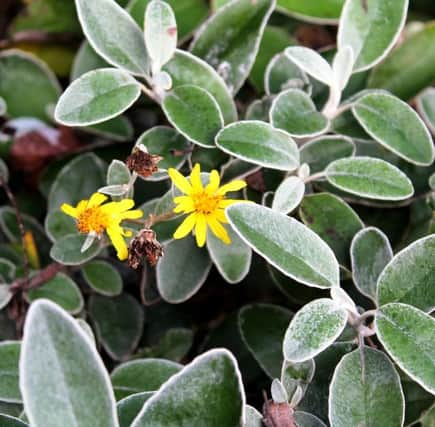Gardening: The tough get going


So, it is obvious that this is quite a hardy little beast and well worth considering for those spots in the garden where the sun shines but the soil is nothing special.
The most common forms available commercially are S greyi and S laxifolius, and both have a lot to offer. The lovely, numerous, daisy-like flowers start appearing in early summer to complement the equally attractive foliage.
Advertisement
Hide AdAdvertisement
Hide AdNormally, Senecio will grow – floppily, to say the least – to a height of three feet. It can spread far more, but it doesn’t seem to mind growing in and among other shrubs or even against a wall or fence.
And it is one of those very valuable plants that are quite happy growing on the coast where the air is laced with salt and there are few days without a stiff breeze; a typical East coast summer, in fact.
It’s possible to keep the shrub it in check by removing any thin, damaged or straggly growth in early spring, but the majority of examples are left unpruned.
Any decent soil will suit Senecio, but if you want plenty of colourful foliage and flowers then it’s a case of the more sunny the site, the better.
Advertisement
Hide AdAdvertisement
Hide AdThis evergreen perennial isn’t to be confused with the equally popular S cineraria (particularly ‘Silver Dust’), an evergreen bush now grown widely as an annual, often as a border edging plant.
As a point of interest, Senecio is a genus of the daisy family that includes ragworts and groundsels, and the scientific Latin genus name, Senecio, means ‘old man’.